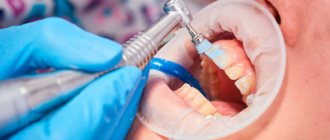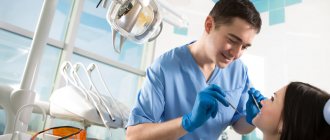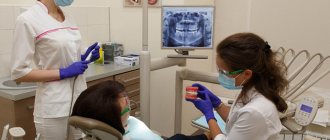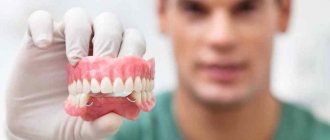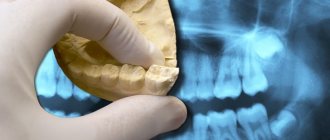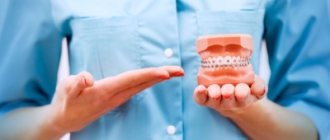Scope of activity of an orthodontist
The main task of an orthodontist is the correction of malocclusions6,10, which have an extremely adverse effect on the health of the oral cavity and the body as a whole2,8. It also corrects unevenness of the dentition and individual teeth, dentofacial and maxillofacial anomalies10.
Preventive measures taken by the orthodontist are aimed at preventing the development of the above problems and eliminating risk factors10.
The responsibilities of the orthodontist also include the prevention of complications arising from malocclusion2:
- dysfunction of the temporomandibular joint;
- difficulty breathing;
- changes in diction;
- headaches;
- digestive problems.
Even in the absence of serious defects, many strive to have a Hollywood smile and absolutely straight teeth, so the services of an orthodontist are quite in demand.
Orthopedist, orthodontist, periodontist, dentist, paramedic, dentist... What do these definitions mean, what diseases are treated by doctors of these specializations, and which of them should you contact in a particular case?
Who is a dentist? To become a dentist, you must graduate from medical school or college. A specialist with secondary medical education is trained to perform relatively simple dental procedures. This does not mean that it is not able to cope with more complex cases, but its theoretical and practical basis is limited, and does not involve performing operations on teeth of the highest level of complexity.
Who is a dentist ? Dentist is a unifying definition applied to a dental specialist with higher education. (Stoma, stomatos means mouth in Greek, logos – teaching). To become a dentist, you need to graduate from a medical academy, institute or university. The duration of their studies is at least 5 years. Along with dental diseases, future dentists study many medical sciences - biochemistry, physiology, therapy, histology, etc. They are prepared not only theoretically, but also practically, having completed a one-year internship or a 2-year residency.
What is the difference between these concepts? The difference between a dentist and a dentist is the level of training and the type of treatment they can perform. The list of works provided for by the job description of a dentist includes: A dentist is a general specialist, diagnostics; treatment of relatively simple diseases of teeth and gums - gingivitis, stomatitis, caries and some others; removal of teeth not complicated by periodontitis; treatment of simple maxillofacial injuries. Carrying out physical procedures; consultation regarding the choice of oral hygiene products (OR); cleaning teeth from plaque and tartar, and some others. In case of more serious dental pathologies - malocclusion, pulpitis, periodontitis, periodontal disease, lesions that have caused tooth destruction by more than 50%, and in other cases requiring the participation of a more trained specialist, the dentist gives the patient a referral to a dentist of the appropriate specialization.
A dentist is a general specialist. He has theoretical knowledge and practical skills sufficient to perform therapeutic, orthodontic, orthopedic and surgical operations. Although, like a dentist, when faced with a particularly difficult case, he can refer the patient to a doctor of narrow specialization.
Narrower specializations: a large number and complexity of pathologies of the dentofacial apparatus, constant improvement of existing treatment technologies and the development of new ones require in-depth, specific knowledge and skills from dentists. This feature has found its implementation in the concept of narrow specialization of dentists. Depending on the type of work performed, the following specializations of dentists-therapists differ; orthodontist; surgeon; orthopedist; hygienist; pediatric dentist. Dentists often combine several specializations at once.
Dentist-surgeon. The prerogative of the profession of a dental surgeon is the following operations: Dental surgeons often treat diseases that are within the competence of dentists of other specialties; tooth extraction; treatment of tumors in the oral cavity; elimination of TMJ dysfunctions, diseases of the salivary glands and trigeminal nerve; primary treatment of wounds and injuries of the mouth, neck, face; plastic surgery and reconstruction of jaw bones; operations on periodontal tissues (gingivectomy, gum pocket removal, soft tissue transplantations, gingivoplasty, plastic surgery of the oral vestibule and frenulum); correction of dental anomalies, implantation. Dental surgeons often treat diseases that are within the competence of dentists of other specialties: phlegmon, periodontitis, sinusitis, periostitis, abscesses, osteomyelitis. They also diagnose specific diseases, the symptoms of which may appear in the PR - syphilis, tuberculosis, actinomycosis.
Dentist-therapist. Typically, patients seeking help from a dentist first see a therapist. A dental therapist is the broadest specialization in dentistry. Typically, patients seeking help from a dentist first see a therapist, who in most cases is able to cope with their problem alone. Job description The instructions of the dentist-therapist provide for the following work: examination of the oral cavity; diagnostics; treatment of teeth (caries, pulpitis, etc.) and periodontal disease (gingivitis, periodontitis, periodontal disease, periodontitis); preparation of PR for prosthetics, its sanitation; whitening and PG of teeth; preventive examination and advice on caring for RP.
Orthopedist.
An orthopedist specializes in restoring teeth using prosthetics. A doctor of this specialization is engaged in the restoration of dilapidated, missing or lost aesthetic teeth using prosthetics. Orthopedist: takes impressions of the teeth, from which the dental technician subsequently makes a prosthesis; tries on, adjusts and secures the prosthesis on the patient. Prosthetic structures are crowns, bridges, inlays , veneers, removable dentures.
An orthodontist adjusts the position of teeth using removable and non-removable orthodontic devices. Orthodontics is a subsection of dentistry dedicated to dental anomalies. The scope of activity of an orthodontist includes: prevention of deformations of individual teeth, dentition and jaws; normalization of occlusion; correction of jaw development; teeth alignment. Correction of the position of teeth is carried out using removable and non-removable orthodontic devices - mouthguards, braces, braces.
General dentist
The specialty “General Dentistry” was introduced by orders of the Ministry of Health No. 553 and 112. This specialty is of particular importance for rural areas, where it is desirable to have a specialist who can provide assistance in several clinical areas. However, until now, due to a number of organizational, educational and legal problems, general practice in dentistry has not received proper development.
Children's dentist. Children and adolescents under the age of 17 are patients of the pediatric dentist. A child's teeth have many differences from adult teeth. This includes the presence of baby teeth, the constant renewal and formation of the dentofacial apparatus, and the inability to use certain anesthetics for children. And the reaction of children to the dental chair creates increased problems. A dentist treating children must not only be able to distinguish pathology from the age norm, detect deviations in bite and tooth formation in time, but also be a bit of a psychologist.
Hygienist. The goal of a hygienist is to prevent dental diseases. Dental hygienist is a relatively new specialization in dentistry. Its goal is the prevention of dental diseases, its field of activity is dental hygiene, proper dental care. A dental hygienist performs the following work: diagnosing dental diseases; professional teeth cleaning; disease prevention; training in proper dental care skills; educational activities (inspections in kindergartens, schools, institutions, organizations, enterprises). © Source: https://dentoland.com/lechenie/chem-otlichaetsya-zubnoj-vrach-ot-stomatologa.html
What treatment methods does the orthodontist use?
There are various methods of orthodontic treatment. The most common of these is hardware3. It involves the use of various designs - removable and non-removable3,11 - with which you can9:
- expand or narrow the dentition;
- speed up or slow down the rate of jawbone growth;
- change the position of individual teeth and the position of the lower jaw.
The devices that the orthodontist works with include:
- Braces are a non-removable system that is fixed on the teeth3,9. It includes the braces themselves, rings, locks and arches3. These elements put pressure on the teeth, moving them in the desired direction3. The method is considered one of the most effective, which is why braces are used to correct most malocclusions4.
- Plates are removable devices with various active elements (screws, springs, hinges). They permanently or intermittently attack the teeth and jawbone3. Plates can be placed at any age, but the best age is considered to be 6-9 years11.
- A pre-orthodontic trainer is a removable elastic aligner that is usually placed at night3. It improves the position of teeth and normalizes breathing, swallowing and muscle tone1.
- Aligners are transparent aligners made of a special thermoplastic material5. They are made after computer 3D modeling of human jaws5, which allows you to see the final result even before they are installed. Aligners should be worn 24 hours a day, removed when eating and brushing teeth, and replaced with new ones every 2 weeks7.
Orthopedic doctors use three main treatment methods:
- Installation of microprostheses. Microprosthetics include inlays and veneers, which are installed in cases of significant tooth decay and in the presence of aesthetic defects, such as stains on the enamel.
- Installation of crowns and bridges – crowns are used to cover teeth with 70 percent or more decay, and bridges are used to replace missing teeth.
- Removable prosthetics - used if there are not enough supporting teeth to install bridges or installation of implants is impossible.
When to see an orthodontist
Some people mistakenly believe that bite correction can only be done in childhood or adolescence. But most of these problems can be solved at any age,2 which is why adults with uneven teeth and malocclusions should consult an orthodontist.
Considering that the appearance of malocclusion pathologies can be prevented already in early childhood, it is better to regularly show the child to the orthodontist, even if his teeth seem straight1. When examining children, the orthodontist draws parents' attention to factors that interfere with the correct formation of the bite. The doctor gives recommendations on how to properly monitor the baby’s diet, breathing and sleep. Normalization of these functions has a beneficial effect on the development of the dental system and the entire organism as a whole1.
Orthodontic treatment is carried out comprehensively, combining the work of a dentist-therapist, an orthopedist and surgeon, a speech therapist, an otolaryngologist and other specialists. However, the leading role belongs to the orthodontist. He develops a comprehensive plan for the prevention and treatment of dental anomalies, coordinates the work of other doctors and conducts follow-up2.
The information in this article is for reference only and does not replace professional advice from a doctor. To make a diagnosis and prescribe treatment, consult a qualified specialist.
to come back to the beginning
What is the difference?
What is the difference between an orthopedic dentist and an orthodontist, read below.
Firstly, the activities of doctors are aimed at correcting various defects . An orthodontist works with dental anomalies, he straightens teeth and improves chewing function. An orthopedist specializes in restoring decaying teeth and installing implants.
If you evaluate Internet queries, it becomes clear that people do not always understand which doctor they need to see - an orthodontist or an orthopedist.
It is worth remembering that orthodontists are found only in dentistry. At the same time, orthopedics is a broader concept, so such a doctor can work not only in a dental clinic. There are orthopedists who deal with problems with the musculoskeletal system.
Bibliography
- Bogdan V. E. et al. Prevention of dental anomalies and orthodontic treatment at an early age // Chief Doctor of the South of Russia. - 2013. - No. 6 (37). — P. 4-6
- Kyzina S. L., Rebrova A. E. Orthodontics for everyone // Healthcare of Ugra: experience and innovations. — 2022. — No. 4. — P. 33-38
- Tokarevich I.V. General orthodontics // Educational method. allowance. — Minsk: BSMU. - 2015. - 80 p.
- Khotayt A. Kh., Butvilovsky A. V. Method of manufacturing a non-removable individual retainer // Orthodontics gnathology. — 2022. — November. — No. 2 (3). — P. 22-26
- Kipkaeva L. V., Belkevich V. V. Application of the aligner system in the treatment of dentofacial anomalies in the permanent dentition. Design features. Treatment effectiveness // Orthodontics gnathology. — 2021. — April. — No. 1 (4). — P. 50-55
- Bulgakova A.I. et al. Structure and equipment of dental organizations // Textbook. - Ufa: Publishing house of the Federal State Budgetary Educational Institution of Higher Education BSMU of the Ministry of Health of Russia. - 2016. - 84 p.
- Ganjali N. T. Braces or aligners? // Bulletin of medical Internet conferences. — 2014. — T. 4. — No. 4. — P. 370
- William R. Proffitt et al. Modern orthodontics // Textbook. — 686 p.
- Demina M.A. Positive and negative aspects of working with orthodontic structures, selection criteria // Bulletin of medical Internet conferences. - 2022. - T. 7. - No. 9. - P. 1440-1442
- Alimirzoev F.A. Modern ideas about complex treatment in orthodontics // Achievements of university science. — 2014
- Shkavro T.K., Pavlova I.A. Orthodontic devices // Textbook. – Irkutsk: IGMU. — 2022. — 32 p.
Difference between an orthodontist and an orthopedist
First, it’s worth understanding the general features of medical specialties. If we consider them within the framework of dentistry, both specialists deal with the correction of various dental defects. As a result of their efforts, it is possible to restore normal chewing functions and improve aesthetic parameters.
At the same time, there are a number of criteria by which it is possible to distinguish one specialty from another. First of all, the concepts under consideration are considered unequal in scope. The main difference between an orthodontist and an orthopedist is that the former works exclusively in dentistry. In general, this field of medicine includes several elements. Each of them has a specific medical specialization.
Expert opinion
Karnaukh Ekaterina Vladimirovna
Graduated from the National University of Shipbuilding, majoring in Enterprise Economics
For example, a dental therapist provides assistance with the development of caries or inflammatory lesions of the gums. The surgeon helps remove damaged teeth and performs other operations. Other specialists help solve other problems.
The orthodontist carries out the required corrective procedures. It helps to straighten the teeth by installing certain structures. This specialist also deals with the elimination of bite defects. Thus, the main direction of activity of a doctor in this specialty is considered to be developmental defects of the masticatory apparatus. We are not talking about the consequences of traumatic injuries.
Orthodontist patients are predominantly children and adolescents. In some cases, a doctor of this specialty deals with deformities in adults. This primarily concerns problems associated with tooth loss.
If we talk about a podiatrist, he does not always work in the dental field. People with poor posture, changes in the shape of the chest, foot defects and similar problems can turn to such a specialist. In this case, it is often necessary to use products that are characterized by a corrective purpose.
An orthopedist who works in the dental field specializes in restoring damaged or lost teeth. He can build up crowns, place implants, and secure removable dentures of the required configuration in the oral cavity.
Consultation with an orthodontist
Not everyone can correct the position of their teeth - but if you dream of seeing a perfect smile in the mirror and do not want to deal with dental problems in old age, you need to consult an orthodontist.
Please note that an examination and conversation with a doctor does not obligate you to get braces. This is an informative consultation where you will learn about your characteristics, possible risks and the approximate course of treatment for crooked teeth. After this, you can calmly weigh everything and decide whether to start treatment.
If you find it difficult to decide to wear braces for a long time, come to us. A consultation with an orthodontist will give you a complete understanding of your situation: the doctor will tell you in detail which teeth need correction, how long you will need to wear braces, and which designs are right for you. You will also learn about the risks that are likely if you do not work with the bite and leave everything as it is.
Where do the best orthodontists in Krasnoyarsk work?
How to find your doctor and find out where the best orthodontists in Krasnoyarsk work? Most patients are introduced to different specialists and then choose from them. To solve the problem of bite, it is worth consulting with several orthodontists. And then choose the one who seems more competent, caring and attentive to you. It also matters what kind of braces and aligners the clinic works with. For example, in Mira dentistry, patients are offered a large selection of designs with different parameters: material, cost, treatment period, size.
Take your time when choosing a specialist who treats orthodontic diseases. Once you find the perfect doctor for you, your years in braces will fly by!
How can a dentist become an orthodontist?
When it comes to choosing a specialization in dentistry, the profession of orthodontist is considered the most promising and prestigious. But to become a practicing expert in this field, it is not enough to study as a dentist. To master the specialty you need:
- graduate from a medical school, Faculty of Dentistry, where training usually takes 5 years,
- complete a residency in orthodontics, which may require about 4 more years.
What it is like to work as an orthodontist, and what it is like for young specialists who are just mastering this specialized field, is not written in textbooks, scientific articles or Wikipedia. To learn more about the nuances of the profession and why young specialists choose this profile, it is better to look at thematic forums where both experienced and beginner specialized dentists communicate:
“I personally highlight many significant advantages of this specialization. As for me, this is even somewhat of a creative profession, where it is extremely important to achieve an aesthetic result. In addition, orthodontics is developing incredibly quickly, and a specialist must constantly learn, grow, and discover something new every time. I won’t lie, because the wages here are much more attractive than in many other areas of dentistry,” shared her thoughts about choosing her specialization, Ekaterina K., a young specialist in the field of orthodontics, St. Petersburg.
Only constant practice can turn an ordinary doctor into a professional doctor
In fairness, it should be recognized that practice and experience are fundamental in the work of an orthodontist. Theoretical knowledge is a powerful base, but to become a really good expert in this field, you need to work as hard as possible. The income level of a full-time orthodontist can vary from 50 to 150 thousand rubles and even higher.
